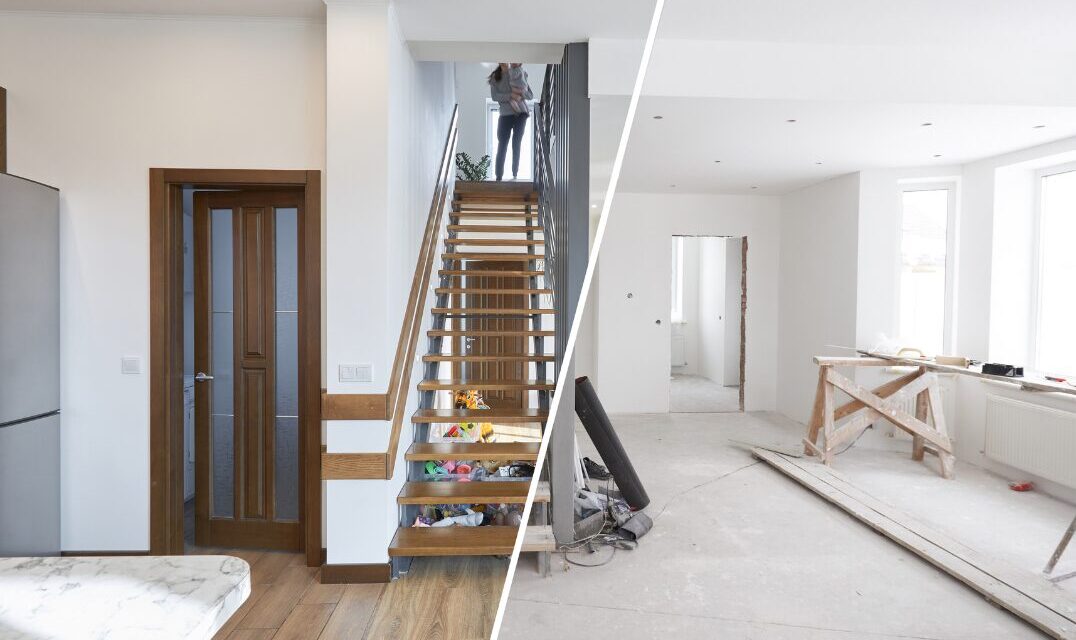Modernizing an outdated room or building an entire addition to a house is cause for excitement. However, home construction may be less of a reason for enthusiasm, often disrupting your household routines and causing unforeseen frustrations. Fortunately, a family plan can help soften the pains of living through a renovation. Here’s why you need a proactive family plan during home improvement projects and tips for creating one your whole household can stand by.
Why Create a Family Plan for a Home Renovation?
Even minor home improvement projects can cause disorder and stress for your family. A family plan creates a sense of normalcy when life becomes anything but, ensuring everyone’s safety and well-being from start to finish.
According to a recent Clearsurance study, 24,534 injuries from home renovations resulted in a visit to the emergency room, with lacerations the most common at 127,486 cases. With a family plan, you can protect your household from these potential dangers by avoiding getting in the way of workers.
Family plans also help you designate temporary living arrangements for meals, play, work and sleep, enabling you to stick to your usual routines as much as possible. Here are other benefits of planning:
- Sets rules and boundaries for each person
- Promotes teamwork to alleviate the burden, such as who does grocery shopping and specific chores
- Establishes emergency procedures
- Encourages family members to discuss their concerns and anxieties regarding renovation openly
- Prepares things the family can do together to create lasting memories
Of course, a comprehensive family plan will take time to coordinate and should welcome input from all household members. Regardless of what yours comprises, it’ll make day-to-day living much easier until you can return to your newly renovated home.
8 Steps for Creating a Home Improvement Family Plan
Do you plan to stay home or move out during your renovation? Either way, construction is bound to impact your household at some point. Preparing for it keeps your family secure and sane until the project is completed. Here are eight helpful tips for creating a proactive family plan.
1. Create a Schedule
Once you’ve worked out the logistics of the home renovation with your contractor, you’ll have a better idea of the project timeline. Discuss it with your family, including various project stages and what they can expect during each phase.
Some parts of the renovation may be noisier than others — a problem for those who work remotely or homeschool their children. If you’re living at home during construction, it’s best to plan around these days to reduce distractions.
2. Determine Communication Strategies
Setting up a communication plan with your contractor is crucial to stay on top of progress. Many homeowners opt for daily updates or connect with their contractors every couple of days, especially if they move out during the renovation.
However, it’s just as important to establish a communication strategy with your family. Consider using a whiteboard, group chat or mobile calendar to update everyone about the project’s progress, timetable changes, and delays.
3. Develop Safety Rules
A home improvement site is riddled with dangers from sharp tools to loose nails and unsteady floors, which is why setting ground rules for safety is crucial. Decide where you and your family will enter and exit the home during renovations, and which areas are off-limits.
You might also consider wearing masks to prevent breathing in dust and toxins. Additionally, use plastic sheeting and yellow tape to close off specific rooms. These can help guide the family toward safer hallways and living areas.
4. Secure Personal Belongings
Large-scale renovation projects could damage your possessions if you don’t store or cover them adequately. Protect your furniture from knicks, dust and debris by wrapping each piece with an old linen sheet or plastic.
Likewise, store loose items in containers in your garage during construction. However, opening your home up means critters can more easily get into your belongings. For example, rats and mice are known to carry 35 diseases, and they tend to chew and scratch their way into things, leaving destruction in their wake. Make sure any storage items you use are durable and located where pests will have a hard time reaching them.
5. Find Alternative Living Arrangements
Some renovation projects require vacating your home, leaving you with the difficult task of finding temporary housing. If you’re lucky, you may be able to stay with a relative or close friend — or check monthly rates for Airbnb rentals in your area.
Otherwise, a hotel room might suffice for those who only need to leave for a few days. Other things to consider when looking for alternative living arrangements include access to a laundry facility, whether there’s a place for easy-prep meals and pet policies.
6. Spend More Time Outdoors
Having your home under construction gives you an excellent excuse to plan outdoor activities with your family. After all, the last thing you want is for them to breathe in dust and debris.
Home improvement projects can cause undue stress for everyone. However, one research review shows nature experiences improved mental health outcomes in 98% of 952 studies, and boosted physical and cognitive health by 83% and 75%, respectively.
7. Build a Family Fun Kit
Home improvement projects impact everyone in the family, but it helps to know you’re all in it together. Of course, dealing with kids’ boredom and frustration is the last thing parents want to worry about when their homes are in disarray.
Whether you’re staying home during construction or leaving for a while, prepare activities everyone can do to unwind together. A family fun kit could include board games, a deck of cards, books, arts and crafts, movies, and anything else you can think of to pass the time.
8. Give Your Home a Deep Cleaning
Before returning to your home, enhance ventilation and do a deep clean to ensure good health. Home renovations stir up hazardous toxins, such as volatile organic compounds, formaldehyde and PVC. Asbestos might also be a problem in older homes, often found in ceilings and floors, spray-on insulation, and cement. While experts recommend installing a new air filter every 90 days for optimal indoor air quality, consider changing it more frequently after a home renovation.
New construction also comes with its own dangers. According to one study, there are 55 chemicals in building materials with concentrations 1,000 times higher than the recommended standards. In addition to an air filter and cleaning, simply opening your windows helps get fresh air in.
Plan for Your Family’s Well-Being During Home Renovations
No one said living through home improvements would be easy, but your family will return to its old routine before you know it. In the meantime, create a plan to tackle each day and overcome unexpected challenges while your home is under construction.





















